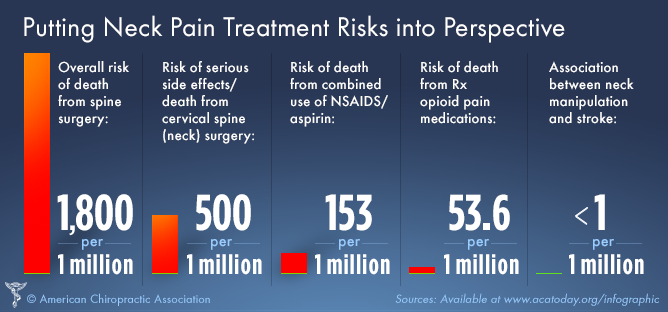Discover The Concealed Significance Behind Your Back Pain And Take Charge Of Your Health
Discover The Concealed Significance Behind Your Back Pain And Take Charge Of Your Health
Blog Article
Content Writer-Tyler Knudsen
If you're experiencing neck and back pain, your body might be attempting to inform you something more than simply discomfort. The way your back feels can give beneficial ideas regarding your overall wellness. Comprehending the details kind of discomfort you're feeling and any kind of accompanying symptoms is key to untangling the secret behind your discomfort. Allow's check out the usual problems and signs and symptoms connected with various kinds of pain in the back to shed light on what your body might be signaling.
Kinds Of Back Pain
When it comes to pain in the back, there are different types that you might experience. One usual type is muscle mass discomfort, frequently brought on by overuse, pressure, or injury to the muscles and ligaments sustaining the spinal column. click here to investigate of pain can range from light pain to severe and incapacitating discomfort.
Another kind is nerve pain, which can result from conditions like herniated discs or sciatic nerve pain. Nerve pain frequently provides as a sharp, shooting feeling that radiates down the leg.
Joint discomfort in the back can originate from issues like arthritis or sacroiliac joint dysfunction. This type of pain is usually really felt in the lower back and can be worsened by particular movements.
In addition, pain in the back can be connected to structural problems such as back stenosis or vertebral fractures. Comprehending the type of pain in the back you're experiencing is crucial in establishing the ideal therapy and administration methods.
Common Effects to Look For
Moving past the various sorts of pain in the back, it is very important to identify the common signs and symptoms that can signify underlying concerns.
Relentless neck and back pain that worsens with movement or in the evening can suggest an extra major trouble. Numbness or prickling in the legs or feet, particularly when accompanied by weakness, might point to a nerve-related problem. If you experience sudden weight reduction along with pain in the back, maybe an indicator of a much more systemic problem.
Focus on any kind of changes in bladder or bowel feature, as this could be connected to spinal cord compression. Fever, chills, or evening sweats combined with pain in the back might indicate an infection. Watch out for discomfort that radiates down one or both legs, potentially a sign of sciatic nerve pain.
Health And Wellness Issues Linked to Neck And Back Pain
If you suffer from pain in the back, it's critical to understand the prospective health and wellness conditions connected to this discomfort. Neck and back pain can be a signs and symptom of various underlying issues, including muscular tissue pressures, herniated discs, osteo arthritis, spinal stenosis, and even conditions like kidney rocks or infections.
Muscle stress are common and usually result from lifting hefty items or unexpected motions.
Herniated discs happen when the soft tissue in between vertebrae protrudes, causing nerve irritability.
Osteo arthritis, a degenerative joint illness, can cause back pain as cartilage material wears down.
Spinal constriction, the narrowing of the back canal, can tax nerves.
Kidney stones might cause extreme back pain if they move right into the urinary tract.
Infections like spinal osteomyelitis can likewise manifest as pain in the back. Comprehending mouse click the next document can aid you seek ideal healthcare and monitoring for your pain in the back.
Conclusion
So, following time your back injures, take notice of the type of discomfort and accompanying signs. Maybe a signal from your body about underlying health and wellness problems like muscle strain, nerve problems, joint issues, or even architectural issues. By recognizing these indicators, you can take positive steps to resolve the origin of your pain in the back and enhance your total wellness and well-being.
